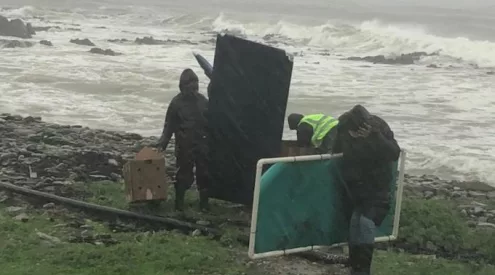
We tend to associate quitting with weakness or defeat, but seasoned hikers know: sometimes stopping is really the best decision you can make.
These are the best and most valid reasons to call it a day on a hike – real trail wisdom means knowing when to walk away!
ALSO READ: Ways to incorporate mindfulness into your hike
You feel unsafe
Your intuition will tell you when something isn’t right – even if nothing looks obviously wrong. Whether it’s a sense that someone nearby is acting suspiciously, wildlife seems too close for comfort, or you are just not at ease with the area, trust your instinct. ‘Trusting your gut’ is a valid reason to end the hike.
Navigation problems or you’re off-trail
Losing the path or getting turned around is more common than you’d think. If you can’t confidently find your way, are second-guessing your route, or no longer see clear trail markers, turn back to the last known point instead of pushing into uncertainty.
You’re low on essential supplies
Running out of hydration or food can lead to problems whether you’ve miscalculated how much to bring – or worse, lost your supplies. It’s time to return if you’re out of food and water.
Gear is missing or not working
From a shattered trekking pole to a malfunctioning GPS device, damaged or forgotten gear can jeopardise your safety. If it’s something essential for stability, insulation, navigation, or emergency communication, don’t try to “make do” – head back before a small issue becomes a big problem.
Trail conditions have deteriorated
Even in good weather, trails can become slick, washed out or blocked by fallen trees. Water crossings may become dangerous, and erosion might make footpaths unsafe. If the trail does not seem safe and yoy feel unsure about proceeding, stop.
You’re feeling ill
Altitude sickness, dehydration, heatstroke, or overexertion can all start with subtle symptoms. If you feel light-headed, nauseous, unusually cold or have sharp pains – especially in your chest or joints – it’s time to quit the trail and seek recovery.
No cellphone signal + increased risk
Hiking in areas without mobile reception is fine if you’re properly prepared. But if your map is on your phone, your backup navigation fails, or an injury occurs, having no way to call for help becomes dangerous. If risk increases and you have no communication, it’s better to leave early than gamble.
You’re not mentally focused or alert
Distractions, stress, anxiety, or even boredom can reduce awareness and decision-making ability. If your head isn’t in the game – especially on technical terrain – you’re more likely to miss trail signs or make mistakes. A clear mind is in fact critical for safe hiking.
Wildfires or smoke in the area
Far-away flames, falling ash, or poor air quality are all reasons to end a hike, as Backpacker advises.Wildfires can shift direction rapidly, and breathing in smoke is dangerous over prolonged periods. If you smell smoke or see haze approaching, leave immediately and check official fire updates once safe.
Poor or changing weather conditions
Weather can change quickly. Sudden temperature drops, incoming lightning, or heavy downpours – especially in mountainous or remote areas – should be treated as clear signals to turn around. If the weather makes visibility or footing unsafe, your hike should end.
You’re running out of daylight
Misjudging timing is common, especially on unfamiliar routes. If the sun is setting and you don’t have a torch or headlamp, continuing is risky. Trails can look completely different in the dark, and even simple terrain becomes hazardous when you can’t see it.
Article published by Woman&Home.
ALSO READ: Where to work remotely with the best nature access
Follow us on social media for more travel news, inspiration, and guides. You can also tag us to be featured.
TikTok | Instagram | Facebook | Twitter


















